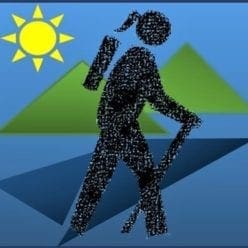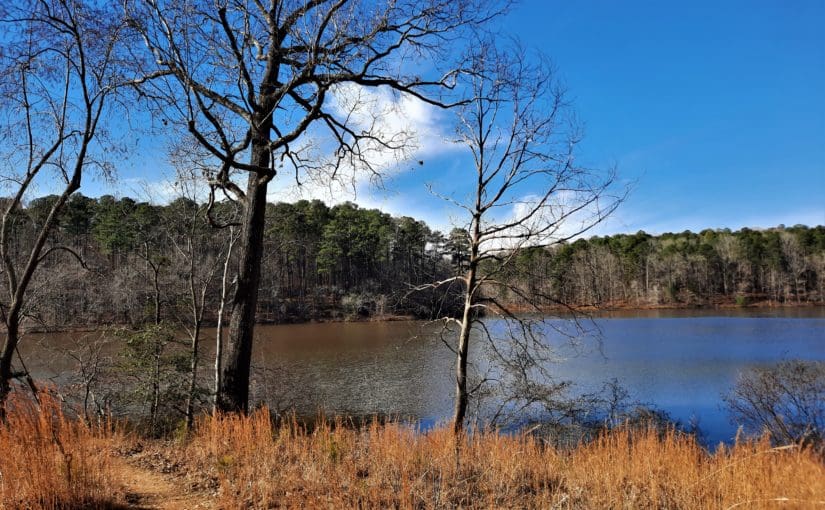Most recently updated February 26th, 2022
– – Training Week 7 began with That Man and I taking advantage of the last forecast day of mild, Spring-like weather with our first bike ride of the season.
We biked about 25 miles on some of our favorite local greenways, including the American Tobacco trail.
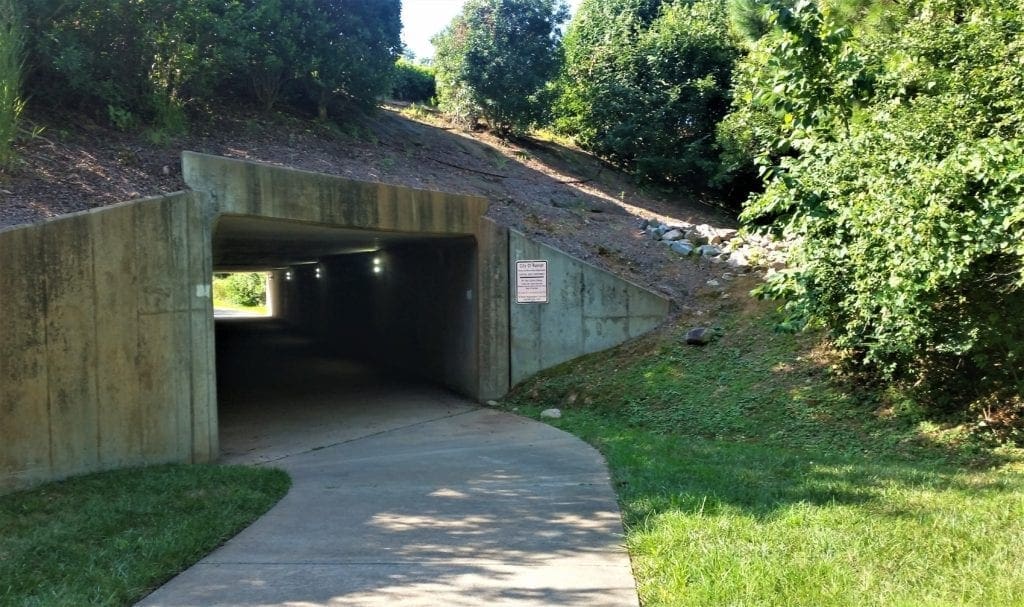
A gorgeous day, and lots of other people were out enjoying it, too.
Biking hits a different set of muscles than hiking, so I was worried I would be sore the next day – but I wasn’t! The training must be working 🙂
Sunday morning it was back to a colder and rainy weather forecast, but I had a big group signed up to hike the 6.5 mile Company Mill trail in Umstead State Park before the rain set in for the rest of the day.
Monday I was planning to just do some kickboxing and weights, when Lenore posted a hike at Umstead so I signed up … but, it was not to be!
Work intervened, and I ended up doing the kickboxing and weights, and also a short urban hike with That Man in the cold sunshine later.
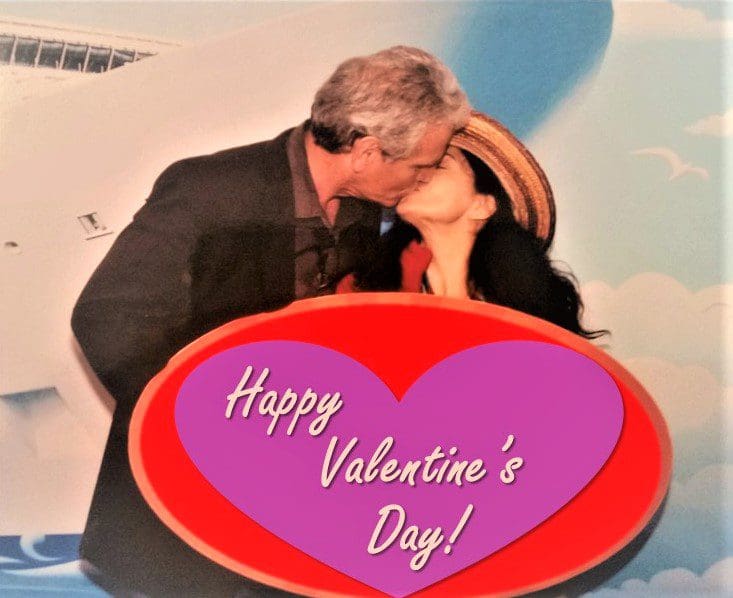
Which was probably a good thing to do on Valentine’s Day anyway 🙂
Tuesday we were back to the MST at Falls Lake for a 9.3 mile hike with a small group from the trailhead on Baptist Rd to Little Lick Creek Bridge and back again.

A great hike, as always!
That said, my ankle started hurting badly on the last half of the hike, even though I didn’t remember doing anything to it….
I was relieved when the hike was over, so I could go ice it and put my foot up!
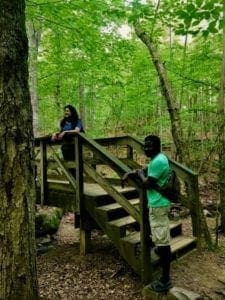
Wednesday was to be my Strength-Building hike for the week, and I had a good crew signed up for a 6-7 mile hike on Loblolly trail in Umstead State Park.
Technically the Loblolly Trail is an out-and-back from the trailhead to the edge of the park, but I add on a portion of the Schenck Forest Loblolly and the Reedy Creek Greenway to create a 6.5mile loop.

This route is primarily natural trails with a portion of the compacted dirt multi-use trail and paved Reedy Creek trail.
The Loblolly route is not as rocky as the Company Mill Trail, and has less elevation gain, though there are a couple of long uphill climbs.
But even with ankle compression – and a sleeve on my opposite knee that was hurting from compensating for the ankle – it was just too painful to continue more than a mile or two.
Fortunately, I had a group of strong hikers who were familiar with the route, so they were able to continue on without me.
I went straight to the pharmacy to get the strongest ankle brace I could find – and more ibuprofen 😉
Between that and rest in the meantime, I’m determined to be ready for my next posted hike!
Thursday was going to be a kickboxing day, but I opted for some heavy core yoga work and arm weights instead, to keep from stressing my ankle.
I tried an urban walk, just a few miles, on Thursday evening, and found that there hadn’t been much improvement – so I decided to try something different.
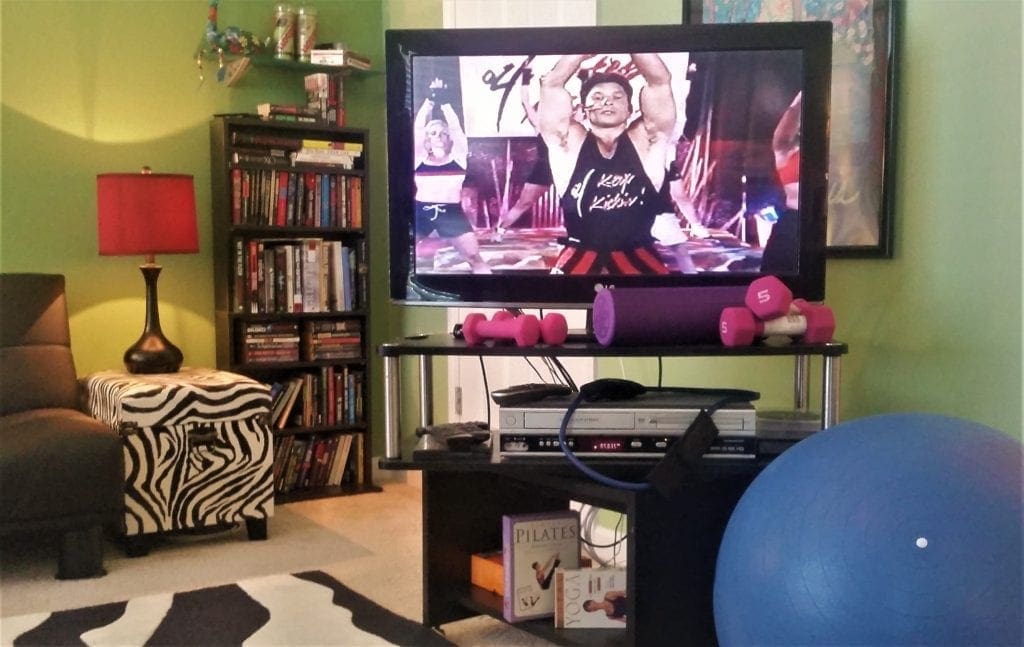
Friday after more core yoga, I made an appointment to take a session in an Infrared sauna.
I mainly wanted a sauna to work up a sweat to take the place of the cardio workouts that I can’t do until my ankle is healed.
But, Infrared is very different than a traditional sauna, and I also discovered that the Infrared sauna has a lot more to offer than just a good sweat.
Before we get into the benefits, let me explain exactly what an Infrared sauna is.
The use of sweat bathing or “hot air baths” were a part of Chinese, Native American, and Eastern European culture, and have been used all over the world for centuries.
These traditional saunas use heat or steam to create an atmosphere that will raise your core body temperature by raising the temperature of the air inside the sauna.
The appeal of saunas in general is that they cause your body to react as if you’re exercising, with sweating and an increased heart rate.
Infrared saunas use infrared light to heat your body without changing the air temperature around you.
Infrared saunas are built using three different sauna therapies:
-
-
- Near IR impacts the surface of the body, namely the skin.
- Mid IR affects the muscles, and
- Far IR permeates far into the body to reach the organs. (ref)
-
Benefits of Using an Infrared Sauna
1. DETOXIFICATION
Sauna therapy, especially far IR, is excellent for detox. By using an infrared sauna, you can rid your body of built-up and dangerous mold, chemicals, and heavy metals.
2. CIRCULATION
Mid IR sauna therapy improves circulation and can give muscles a greater degree of flexibility, increased range of motion, decreased stiffness, and less joint pain.
3. REPAIR AND REGENERATE CELLS
Near IR sauna therapy promotes faster cell regeneration and tissue growth, which speeds up the skin’s healing process. By activating heat shock proteins, infrared sauna therapy also repairs cellular damage in the body.
4. LOWER INFLAMMATION
Near IR consists of extremely short wavelengths, which lowers inflammation. The short wavelengths can improve the quality of your skin and diminish the appearance of unwanted blemishes.
5. BOOST IMMUNITY
Near IR sauna therapy increases blood circulation and oxygenation in blood cells, strengthening the immune system, improving cellular health, and aiding in muscle recovery.
6. WEIGHT LOSS
Studies show that a single far IR sauna therapy session can burn up to 600 calories. In cases of patients who must remain sedentary, a sauna could be used as a substitute for traditional exercise.
8. ACTIVATE MITOCHONDRIAL ACTIVITY
There is evidence that heat exposure is very healthy for your energy-producing mitochondria.
9. INCREASE BRAIN-DERIVED NEUROTROPHIC FACTOR (BDNF)
The Brain-derived neurotrophic factor (BDNF) is a protein in your brain that helps keep your brain young and healthy. Studies show that heat exposure can help boost your levels of this all-important protein in your brain!
In some studies, people who used Infrared saunas experienced an improvement in their asthma symptoms.
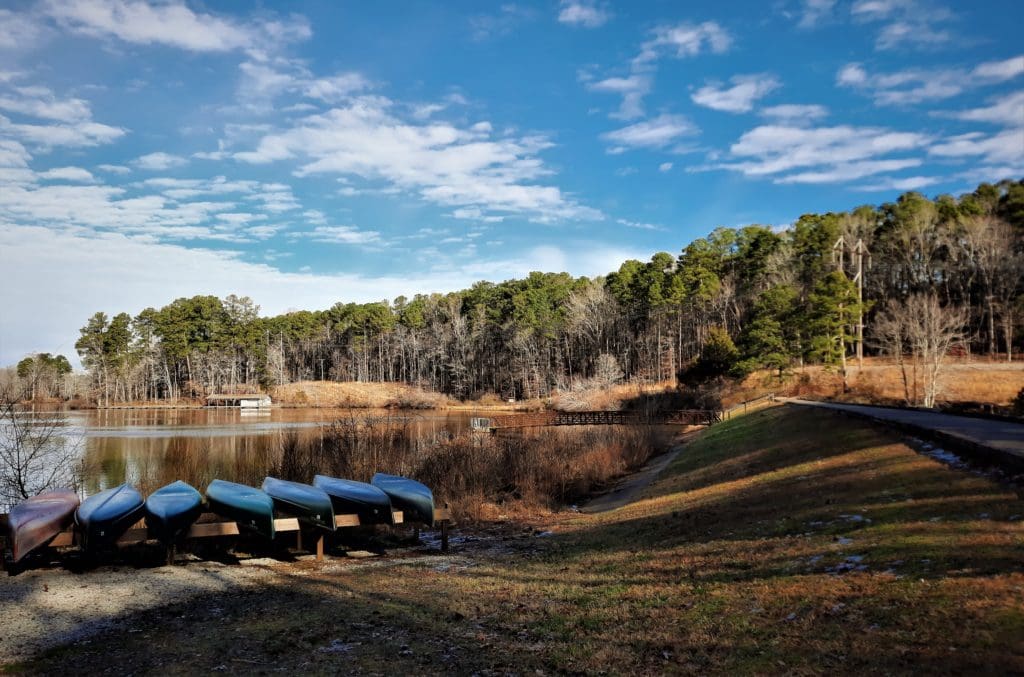
Improve Wound Healing and Chronic Disease
Infrared saunas are unique in that they can help to improve wound healing – though you shouldn’t use one with an open wound.
Specifically, research out of NASA has shown that infrared light significantly increases tissue growth and cell regeneration due to our mitochondria readily accepting infrared light (ref).
This increases the cellular activity needed for wound healing.
In the study, wound size decreased by as much as 36%, and cell growth was enhanced by 150-170%.
The young woman who helped me at my local spa said that she had scars on her abdomen from several surgeries, and that the Infrared sauna made them heal and disappear very quickly!
Several studies have looked at using infrared saunas and found some evidence of benefit, in the treatment of chronic health problems, too, such as:
-
-
- high blood pressure,
- congestive heart failure,
- dementia and Alzheimer’s disease,
- headache,
- type 2 diabetes and
- rheumatoid arthritis
-
However, larger and more-rigorous studies are needed to confirm these results. On the other hand, no adverse effects have been reported with infrared saunas.
Cost for one 45 minute session at my local salon is around $40, though you can get discount packages.
If you try Infrared Sauna and really like it, you can even get one for your own home at relatively small expense.
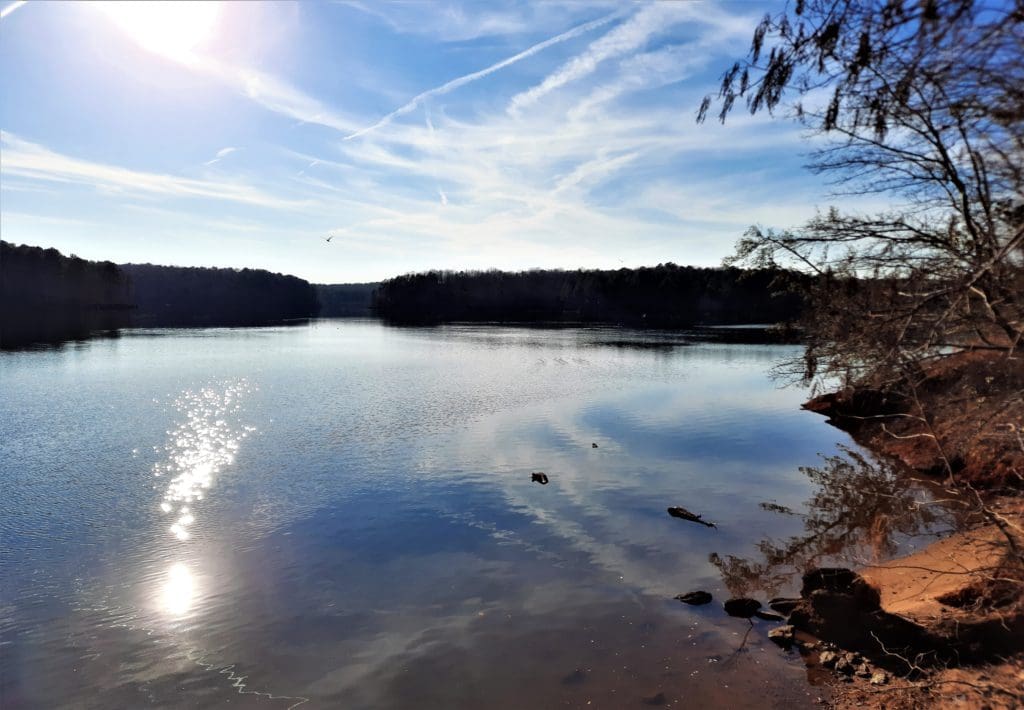
I went for another short urban walk with That Man on Friday evening – around 2-3 miles – and found that there was some improvement in my ankle already!
Was the improvement due to the Infrared sauna treatment? Hard to say, but it probably didn’t hurt.
So, I think I’ll do a few more sessions in the Infrared sauna – at least until the ankle is a lot more healed up.
Who knows, I may see some other improvements as well 🙂
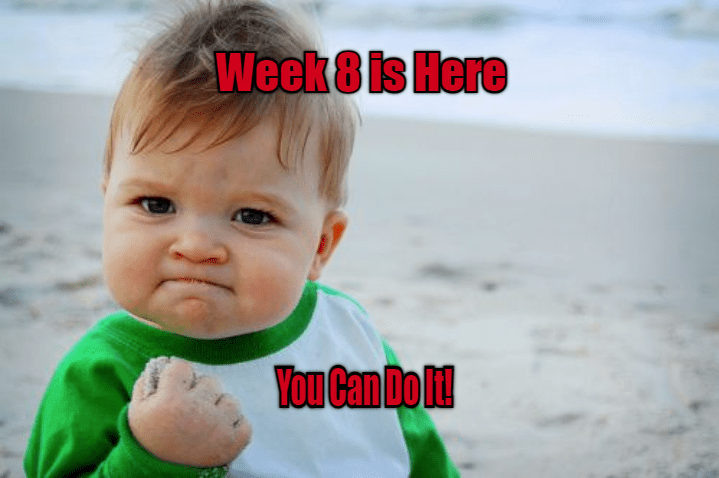
Week 8 is coming up – the last week of the training!!
It might be difficult with my bum ankle, but I’ll find a way. If I can do it, so can you!
Perhaps I’ll go back and read my article on training back from an injury and take my own advice 🙂
And focus, focus focus…..
TAKEAWAY LESSON: Training towards a goal is a planned process, but you should be able to respond to unplanned events like injury or weather changes without giving up your training entirely. Just keep going – but safely, of course.
I hope you’ve found my Training Log ramblings to be helpful- or at least amusing! 🙂 To see more of them go to my Training Log.
You could also take a look at my 8 Weeks to Awesome Training Plan post, if you want to see what kind of training I’m doing.
Thanks for stopping by – see you next time! LJ
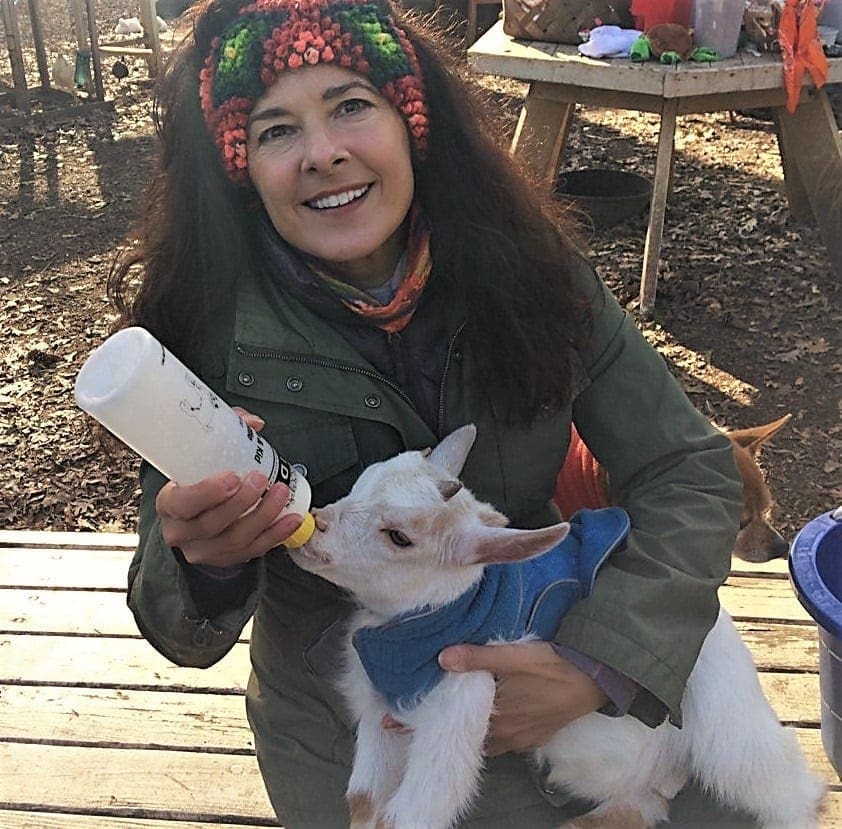
LJ has spent much of her free time as a single Mom – and now as an empty-nester – hiking in the US and around the world. She shares lessons learned from adventures both local and in exotic locations, and tips on how to be active with asthma, plus travel, gear, and hike planning advice for parents hiking with kids and beginners of all ages. Read more on the About page.
